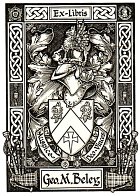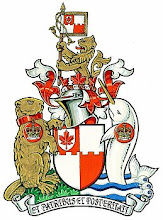A late 14th century medieaval tournament was organized by
David M. Cvet, President and Founder of the
Academy of European Medieval Martial Arts (AEMMA) on Saturday, March 15th at the
Royal Ontario Museum (ROM). The ROM offered
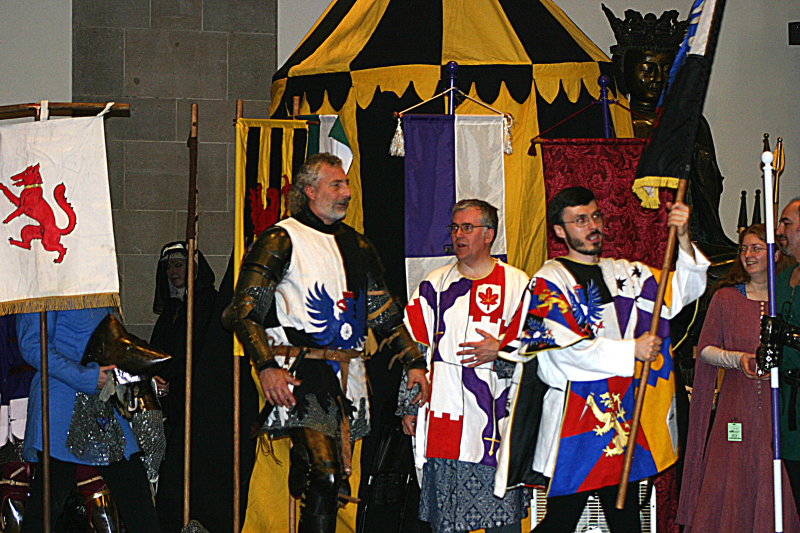 |
| Figure 1: L-R: David Cvet, David Rumball (Appellants' Herald), Matt Dreger (Defendants' Pursuivant) - photo by Jim Atack |
its large Currelly Gallery as the venue for the event. The possibility of holding a tournament had been discussed for a number of years within AEMMA and the last couple of years, with the ROM. The vision remained steadfast with a strong desire to achieve a balance between a mix of pomp, ceremony and martially-oriented armoured bouts. This was achieved
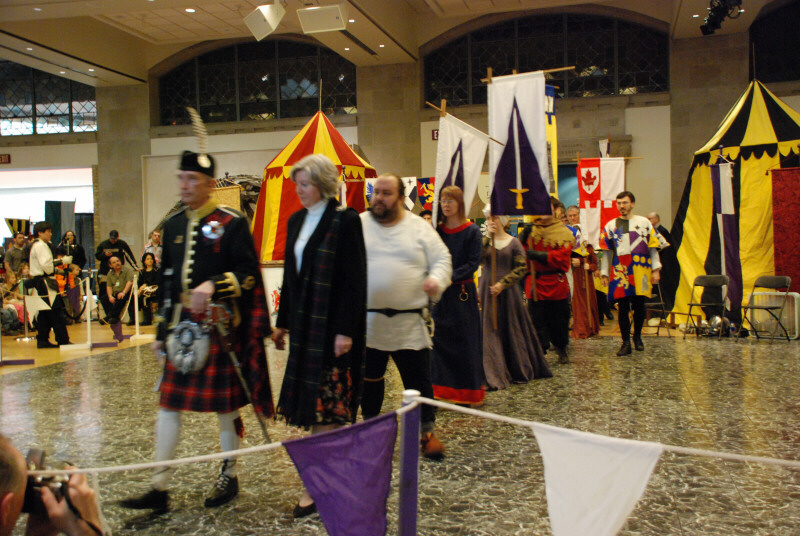 |
| Figure 2: Robbie Sprules and his wife, Lucinda lead the opening procession into the fighting lists - photo by Gail J. Smith |
on that day. The Royal Heraldry Society of Canada was represented in this unique event with
David E. Rumball (LRHSC) in the role of “Appellants' Herald” (see image on the right). Further representation by the Society was
Robbie Sprules, Lord of Wrentnall and his wife, Lady Lucinda. Robbie was the Patron of the tournament in keeping with tournament traditions and who also infused a level of dignity and credibility to the tournament proceedings.
The most notable aspect of the tournament from a heraldic perspective was the opening ceremony, in which the tournament officials including two Heralds and two Pursuivants all wearing exceptional
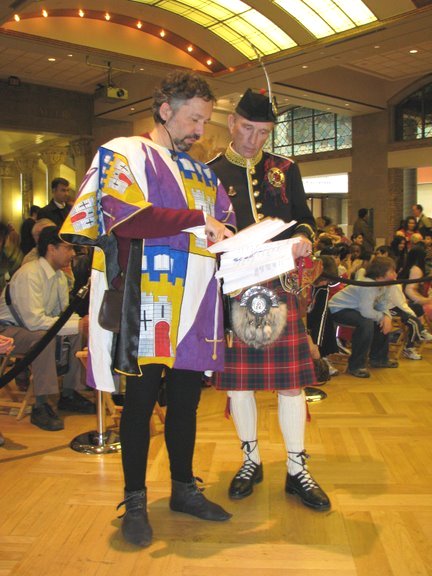 |
| Figure 3: Dr. Robert Mason and Robbie Sprules reviewing the combatants list - photo by Peter Yu. |
heraldic tabards followed by ten fully armoured combatants processed into the lists, each individual being lead by a standard bearer. Most of the combatants also wore jupons depicting their personal coat of arms. The Appellants' Herald's (David Rumball’s) tabard bore the arms of the
Ottawa Medieval Sword Guild (OMSG) and the arms of the
Royal Heraldry Society of Canada. The term “Appellants” refers to the “away team”. The Defendants' Pursuivant's tabard, depicted in the image above right worn by AEMMA student Matt Dreger, depicts the arms of the various armoured members of AEMMA Toronto. The reverse of the same tabard bears four other arms, for a total of eight arms. Note that David's jupon bears his personal arms.
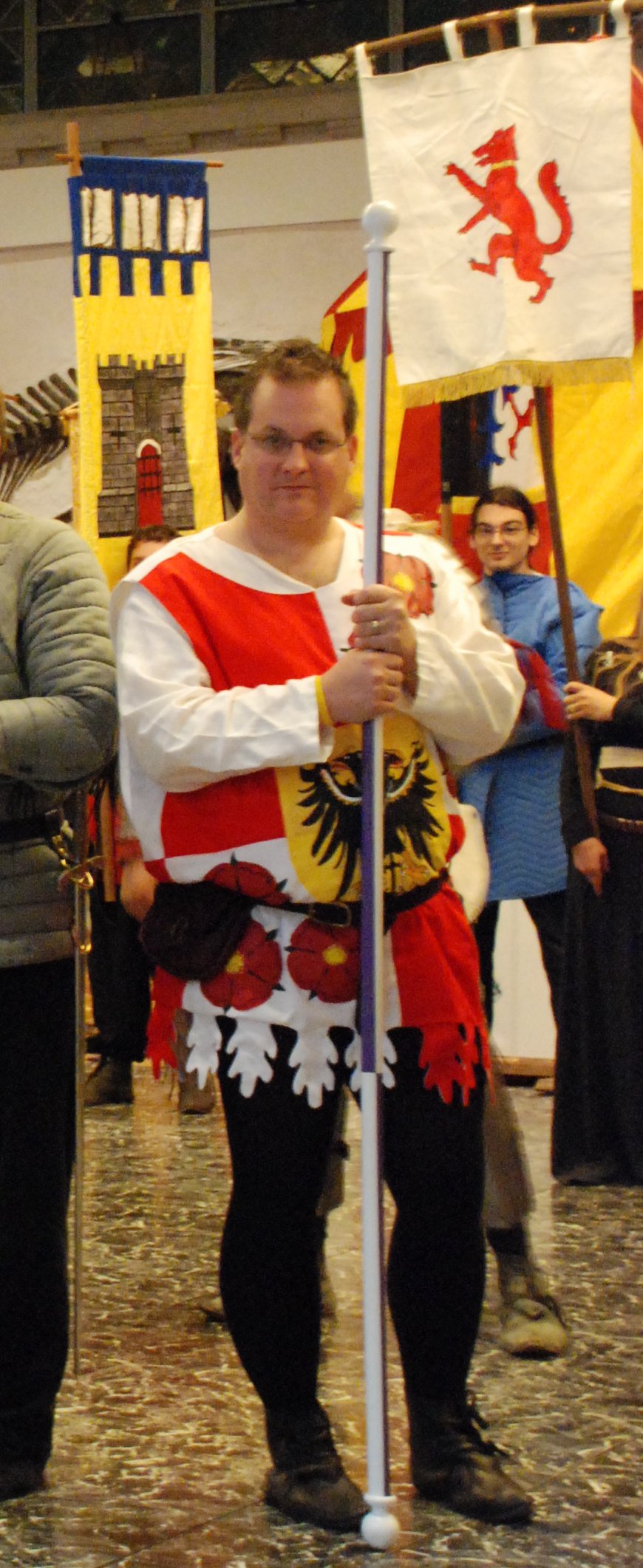 |
| Figure 4: Russ Howe wearing his jupon depicting his arms, clearing indicating Austrian origins - photo by Gail J. Smith |
The Defendants' Herald's tabard (see image below) bears the arms of AEMMA (its petition is completed, and awaiting the Letters Patent), and the arms of the Friends of the Medieval Studies Society of the ROM, or the FMSS. This was worn by the Curator of the Near East Department, Dr. Robert Mason. The tabard is the same front and rear.
The Appellants' Pursuivant's tabard (not shown) bears the arms of the current armoured combatants who form the OMSG group in Ottawa. There are eight arms on that tabard as well.
Some of the tournament volunteers also wore their jupons, even though they were not participating in the armoured bouts. One such individual was Russ Howe, a member of AEMMA who will be ready for the armoured tournament in 2009, and who is also a member of the Society.
The tabards were created by an AEMMA student by the name of Ralf Siferd and his wife Ruth. They had generously donated all four tabards including their time and materials to AEMMA. These will be used for many years to come.
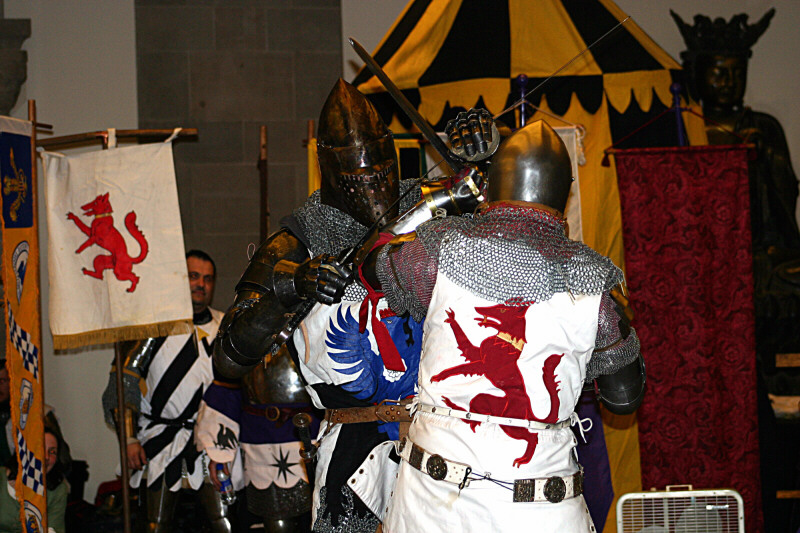 |
| Figure 5: David Cvet battling Dale Gienow from Muskoka with steel longswords - photo by Jim Atack |
Combats were conducted with spear, pollaxe, sword and dagger. The bouts were timed to a maximum of three minutes or until one of the following victory conditions were met:
1. three landed blows with the point within the limbs and neck,
2. unbalanced and cast down,
3. forced from the lists,
4. disarmed of all weapons carried.
In all, twenty combats were conducted throughout the afternoon, each appellant free to choose the weapon or weapons of choice for the bout. At the conclusion of the tournament, the outcome was an equal number of victories for the Appellants and Defendants.
Mathieu Ravignat from the OMSG, and also, a recent member of the Society, was awarded by Lady Lucinda, wife of the Lord of Wrentnall a ceremonial Scottish Great Sword being identified as the "best amongst equals".
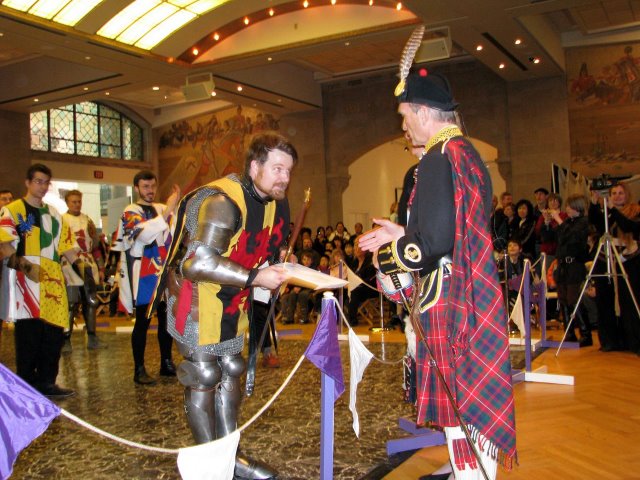 |
| Figure 6: Mathieu Ravignat accepting the award from Robbie Sprules and Lady Lucinda for "best amongst equals" - photo by Gail J. Smith |
It was remarked by many spectators, who offered their comments after the tournament, that they had never seen anything like this and all were suitably impressed. The ROM was also very happy with the event and expressed a desire to pursue this again next year. The ROM on that Saturday was capacity, with hundreds upon hundreds of people awaiting entry into the ROM, lining eastward on Bloor St. and south on University Ave. It had the appearance of a lineup to a “rock concert”!
1. three landed blows with the point within the limbs and neck,
2. unbalanced and cast down,
3. forced from the lists,
4. disarmed of all weapons carried.
In all, twenty combats were conducted throughout the afternoon, each appellant free to choose the weapon or weapons of choice for the bout. At the conclusion of the tournament, the outcome was an equal number of victories for the Appellants and Defendants.
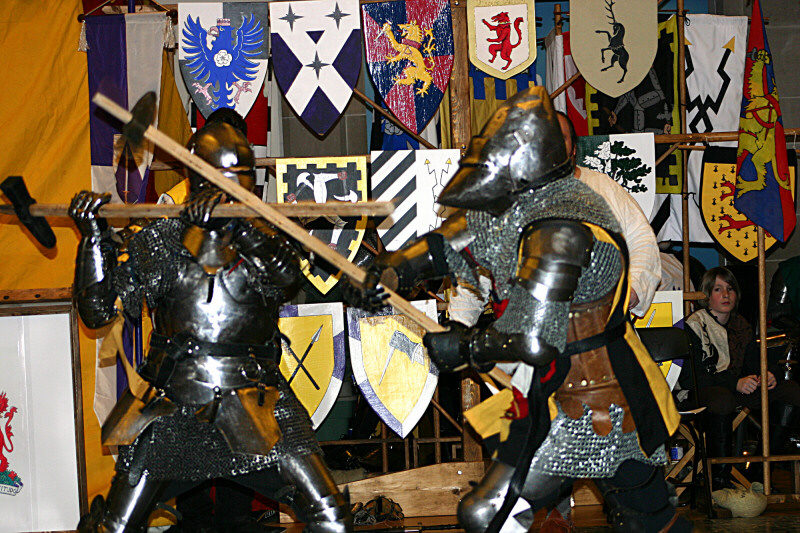 |
| Figure 7: David Murphy battling Mat Ravignat (OMSG) with poleaxe - photo by Jim Atack |
Mathieu Ravignat from the OMSG, and also, a recent member of the Society, was awarded by Lady Lucinda, wife of the Lord of Wrentnall a ceremonial Scottish Great Sword being identified as the "best amongst equals".
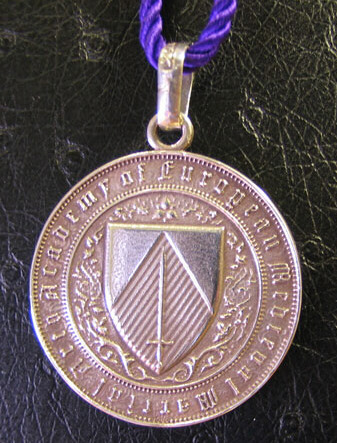 |
| Figure 8: One side of the tournament medallion depicting the AEMMA arms, the reverse indicting date and location of the tournament. These were presented to each of the combatants at the banquet. Designed and created by Nicolas Facundo-Rico. |
After the tournament, a good number of combatants and other participants, friends and family attended the medieval banquet at AEMMA's salle d'armes. With the salle beautifully decorated with arms of all of the combatants depicted on wooden shields, standards, banners, wrought iron candelabras, a medieval musical ensemble and demonstrations of medieval dancing, the banquet achieved what it may have been like in the medieval period. After some remarks and short speeches, Lady Lucinda awarded to each of the armoured combatants a tournament medallion. The medallions were created by an AEMMA student Nicolas Facundo-Rico.
The ROM and AEMMA will host another tournament mid-March in 2009 once again, with the possibility of turning this into an annual event. Being the first time, some minor adjustments and tuning will be required resulting in an event which will be even more spectacular next year!
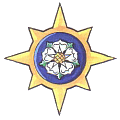 The Toronto Branch of the Royal Heraldry Society of Canada hosted its 5th annual Christmas Dinner at the Royal Canadian Military Institute located on University Avenue, Toronto. The dinner was well attended and had as special guest and speaker, artist Karen Bailey.
The Toronto Branch of the Royal Heraldry Society of Canada hosted its 5th annual Christmas Dinner at the Royal Canadian Military Institute located on University Avenue, Toronto. The dinner was well attended and had as special guest and speaker, artist Karen Bailey. 











